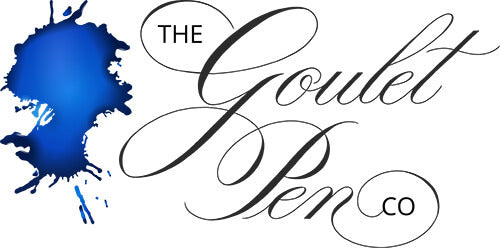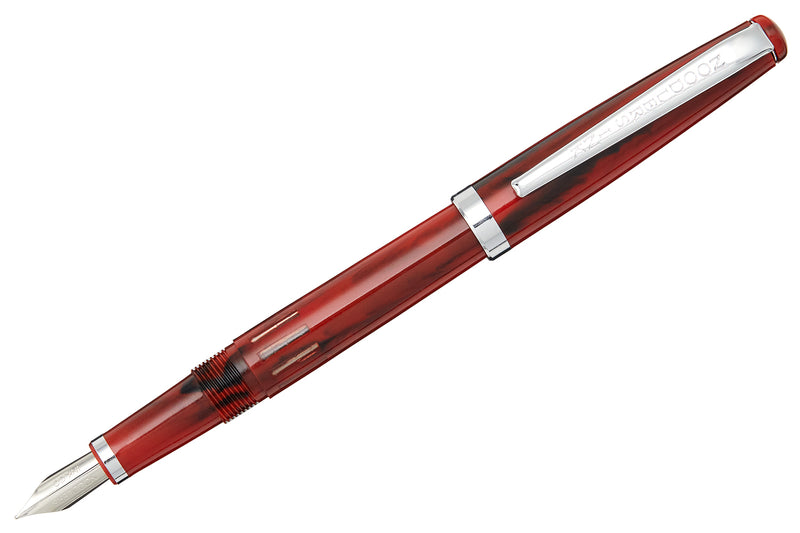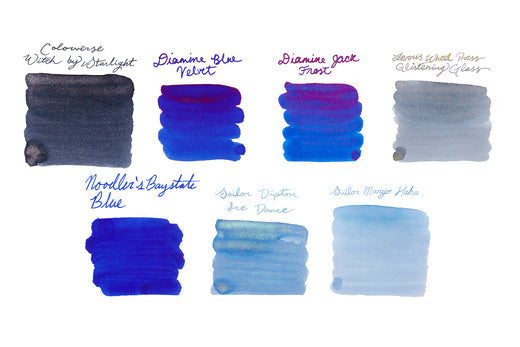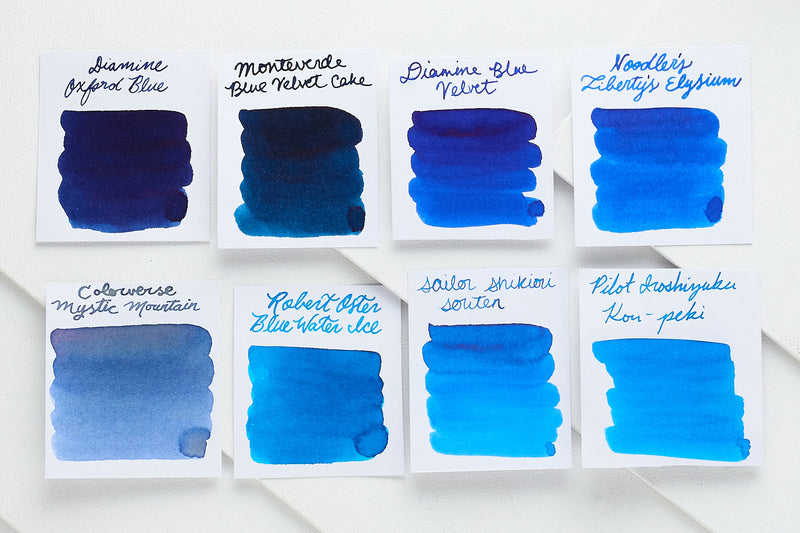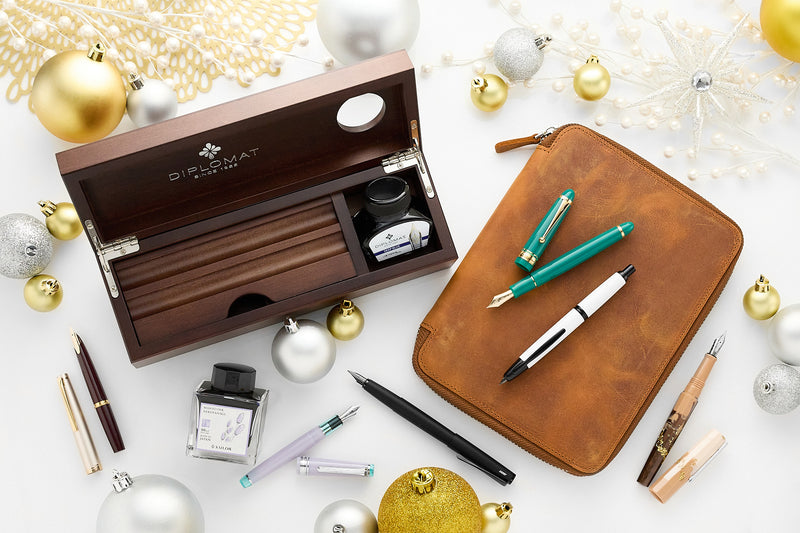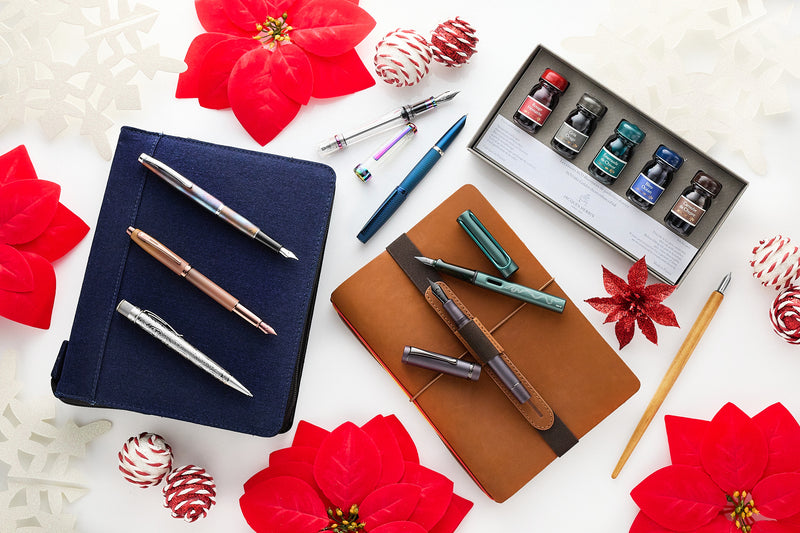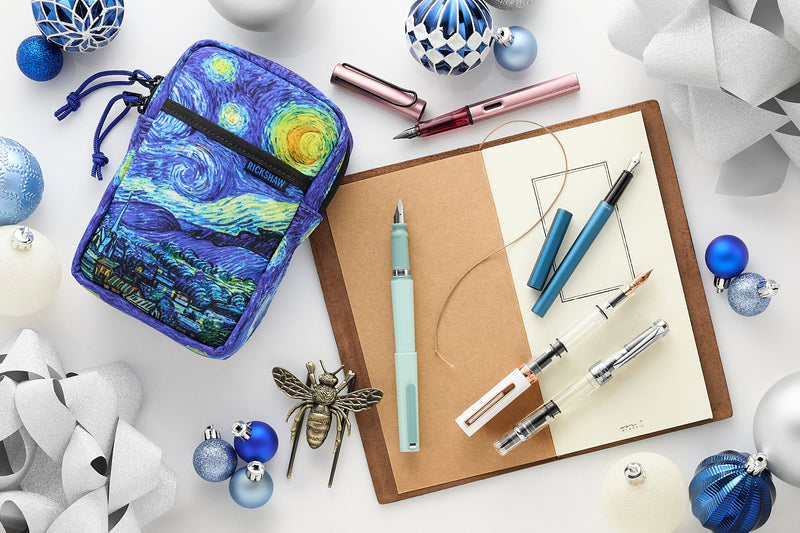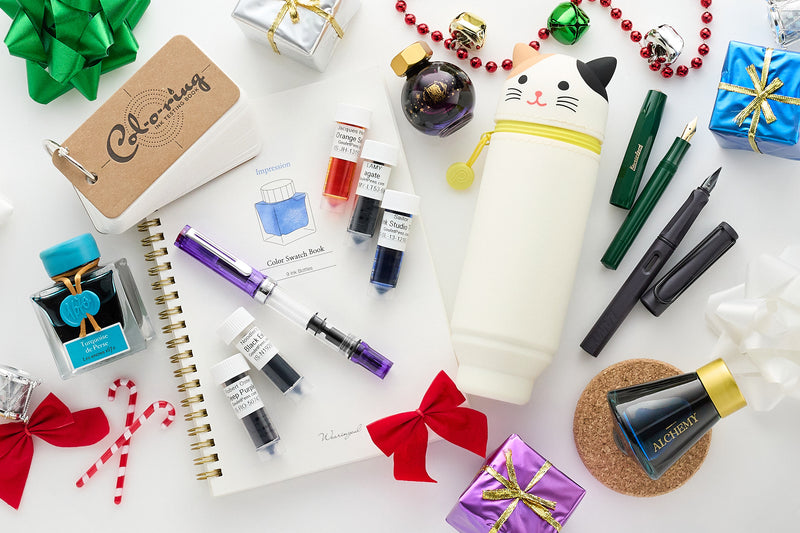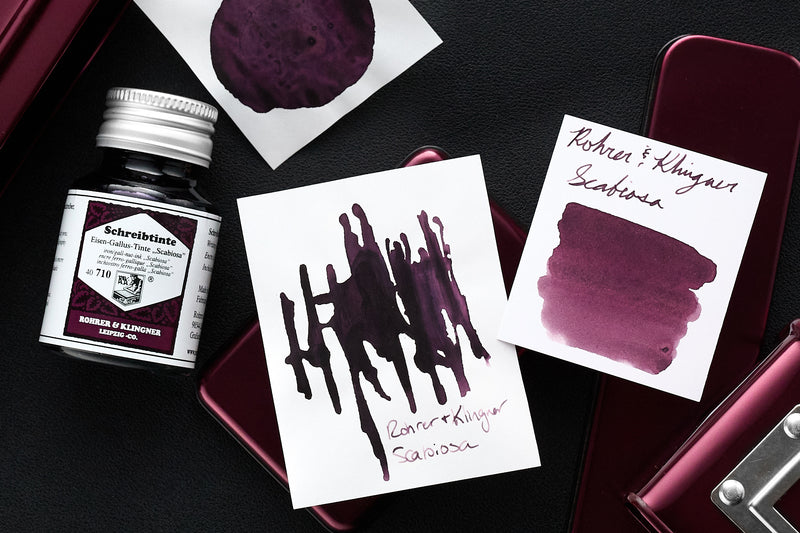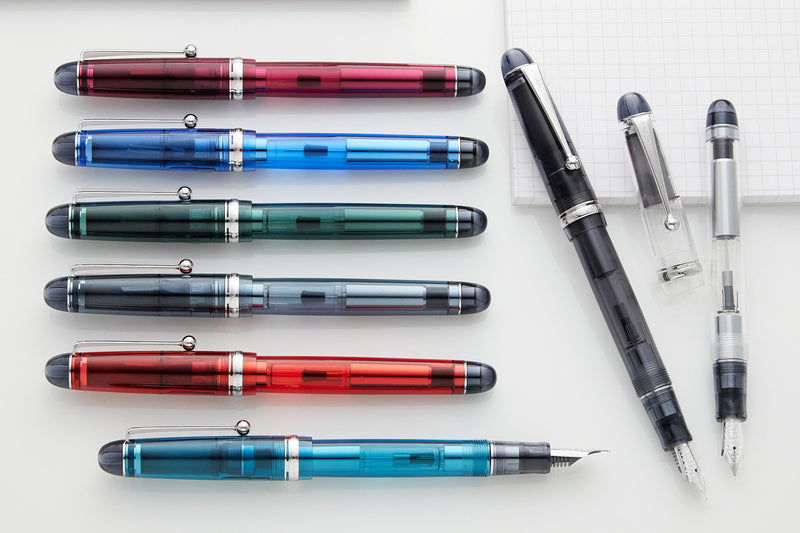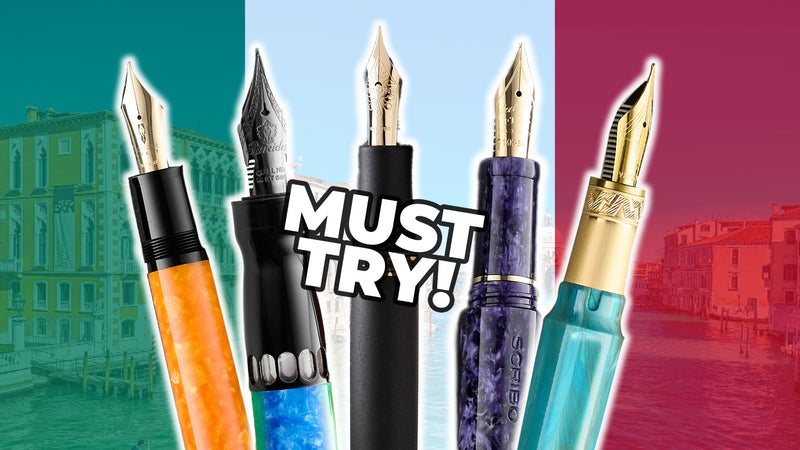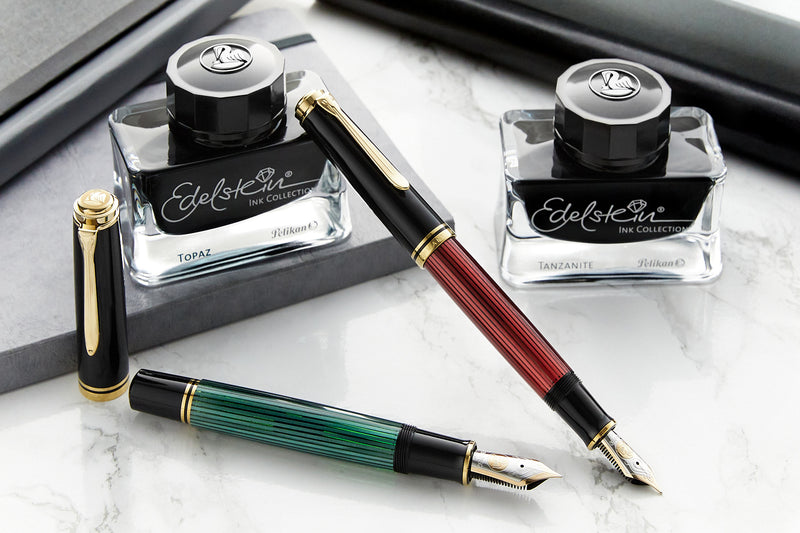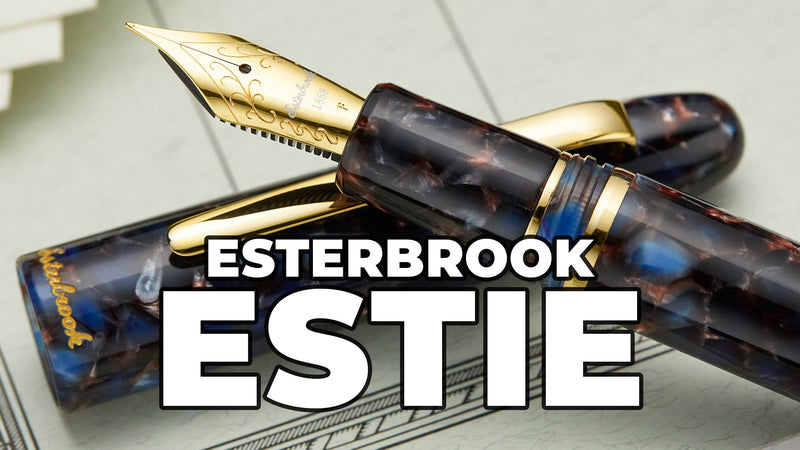This red and black Noodler's Nib Creaper flex fountain pen features a small, slender body with a steel flexible #2 nib and a twist piston mechanism. A small ink window shows how much ink is left in your pen. These pens are made from a celluloid derivative. The vegetal resin body of this pen may show particles or striations within the material. This is most noticeable in demonstrators and bright colors.
The Nib Creaper (also known as the "Standard Flex Pen") was the first fountain pen produced by Noodler's, introduced in 2010. The Noodler's flex pens were designed for the hands-on tinkerer - they are made to be taken apart and adjusted. The nib and feed pull right out and can be adjusted and heat set for optimal performance. Don't be afraid to get a little ink on your fingers while you learn how to use this pen.
As a simple rule of thumb for writing with a flex pen, just apply slight pressure on your downstrokes, which will spread the tines and increase the line width, achieving that optimal line variation. Make sure to go slowly so that the ink can keep up with your writing. As with any flex pen, it just takes practice!
Due to the residual machining oils used when cutting the feeds for these pens, we highly encourage you to give the pen a good flush before use. We recommend any of the following options: distilled water, water with a touch of dish soap, a pre-packaged pen flush, or a solution of 10% clear ammonia to water. This should resolve most ink flow issues!
We do our best to photograph the pens to show how they will appear in person, but due to the nature of the material, there will be some variation in the pattern seen here. This adds an element of uniqueness to the pen, with no two patterns being exactly the same. We cannot honor special requests.
Click here to download the printable PDF instruction sheet for the Noodler's Nib Creaper Flex.
- Condition
- New
- Brand
- Noodler's
- Type
- Fountain Pens
- Color
- Red
- Demonstrator
Whether or not the barrel of the pen is translucent, allowing you to see the ink and filling mechanism inside.
- No
- Body Material
- Resin
- Cap Rotations
For pens with a screw-cap closure, how many rotations it takes to uncap/recap the pen.
- 1
- Cap Type
How the cap is opened/closed from the barrel of the pen. Some common options include Snap-Cap, Screw-Cap, Magnetic Cap, or Capless (no cap).
- Screw-cap
- Compatible inks & refills
Which ink this pen will accept. Choices include bottled ink and various styles of pre-filled ink cartridges.
- Bottled ink
- Filling Mechanism
How the pen fills with ink. Click here to watch our video tutorial on common filling mechanisms.
- Piston
- Grip Material
- Resin
- Nib Size
- Flex
- Nib Color
- Silver
- Nib Material
- Steel
- Postable
Whether or not the cap fits securely onto the back of the barrel when open.
- Yes
- Retractable
Whether or not the nib/tip can retract into the body of the pen (usually for click or twist-open style pens).
- No
- Diameter - Body
- 10.7mm (0.4in)
- Diameter - Cap (without clip)
- 12.4mm (0.5in)
- Diameter - Cap (with clip)
- 15.9mm (0.6in)
- Diameter - Grip (mm)
Measured from the place most people choose to rest their fingers, which varies with each pen.
- 7.8mm
- Length - Body
The measurement from the back end of the barrel to the tip of the nib.
- 113mm (4.4in)
- Length - Cap
- 57mm (2.2in)
- Length - Nib
The measured length of the visible portion of the nib when it is installed in the pen, from grip to tip.
- 13.3mm (0.5in)
- Length - Overall (Closed)
- 128mm (5in)
- Length - Overall (Posted)
When the cap of the pen is posted onto the back of the pen body, this is the measurement of the entire pen including the nib.
- 148mm (5.8in)
- Weight - Body
If a converter is included with the pen, this weight is reflected in the total.
- 8g (0.3oz)
- Weight - Cap
- 2g (0.1oz)
- Weight - Overall (g)
- 10.0g
- Max Ink Capacity - Piston Vac
The maximum volume of ink that can fit in the pen when using the built-in piston or vacuum filling mechanism.
- 1.00ml
